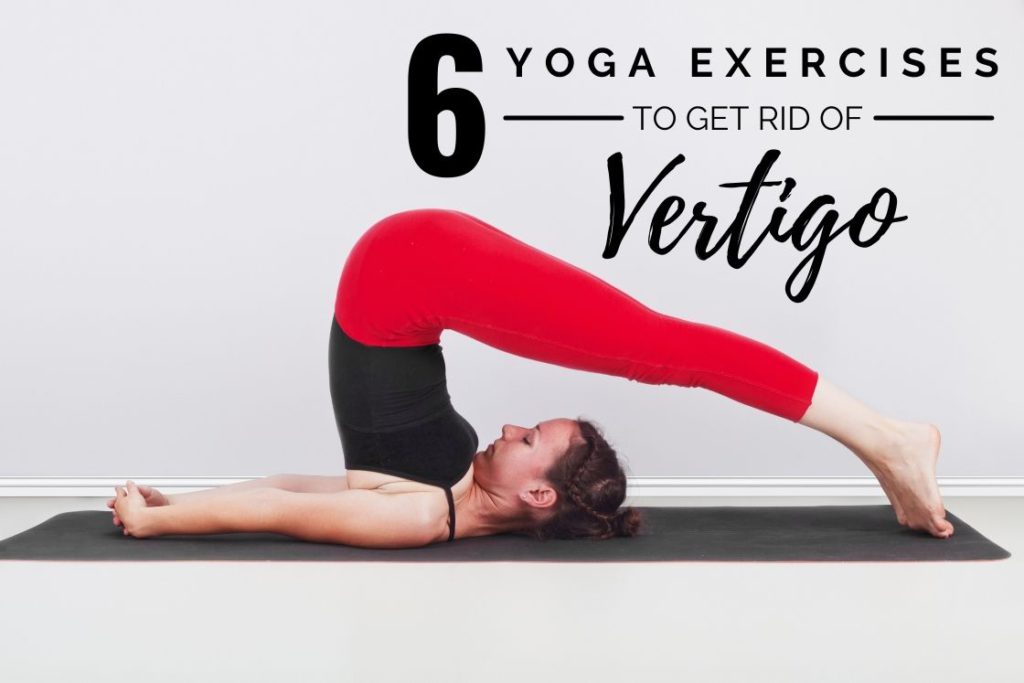
Vertigo is dizziness that creates a sense of disorientation to your balance. In vertigo, while you standing still your surroundings seems spinning or it feels like you’re spinning in relative motion.
Very few solutions work better than Yoga to deal with balancing issues like vertigo.
- Yoga exercises have excellent stimulation for your CNS and nerves of the eye and ear. It can also stabilize the fluid movement in your inner ear.
- The practice of yoga has a positive effect on optimizing the blood flow to your head/facial region. It will further help you fight infections in the ear and eye apparatuses, and reduce inflammation.
When all these benefits of yoga are combined they can prove quite brilliant in eliminating vertigo.
Before we start yoga’s mechnism in vertigo treatment and specific yoga poses for the same, lets first identify vertigo in real sense.
How to identify Vertigo?
Vertigo like nausea can be tricky to identify. Vertigo comes with a different combination of sensations related to balance disorientation. In short, vertigo can make you feel a lot of things. A most common sensation, however, is the feeling of dizziness and spinning of the head. Some people may even lose balance and feel pulled in one direction. In cases where vertigo is a result of other underlying disorders, the dizziness may be accompanied by nausea, vomiting, headache, vision difficulties, sweating, and tinnitus.
What causes vertigo?

Our musculoskeletal system, ears, eyes, brains, and the CNS, collectively makes our balancing system. A subtle disturbance in any of these parts can easily cause vertigo. Vertigo is essential of two types: peripheral vertigo and central vertigo.
In case of peripheral vertigo, the cause is mostly with your inner ears. More specifically, with the bony labyrinth, vestibule, and vestibular nerves. One of the most common causes of vertigo is virus-induced inflammation in the inner. An increase and decrease of fluids in the inner ear can also lead to vertigo. An infection or disorder of the ocular system can also lead to vertigo. Some prominent causes of vertigo are:
- BPPV, Benign Paroxysmal Positional Vertigo
- Vestibular Migraine
- Vestibular Neuritis
- Meniere’s disease
- Vestibular Paroxysmia
- Otosclerosis
- Liver disorder
- Thyroid disorder
- Impact trauma to the head
- Neurodegenerative disorders
- Medication side effects
- Impact trauma to brain
- Neurological viral infections
The relationship between yoga and balance
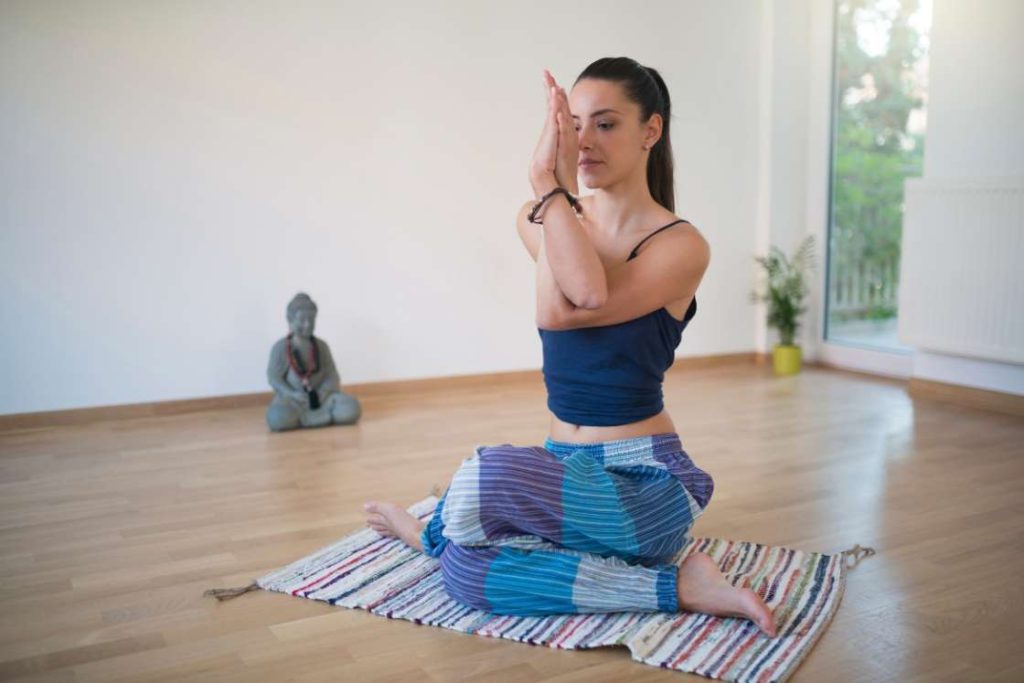
The relationship between yoga and balance is the quintessential factor at play. Vertigo being a balancing issue can be treated with yoga by incorporating a dynamic combination of musculoskeletal and neural involvements in the form of physical postures and breathing exercises.
Yoga poses for vertigo are structured in such a way, that the flow of the movement and the angle of the stretches effectively work towards optimizing the fluid flow in your body. Which includes your blood flow and the fluid movements in your inner ear responsible for vertigo.
A 2014 study from the Department of Health Sciences, Anhanguera University clearly shows that hatha yoga can be relied on to improve postural control in young adults [efn_note] Hatha Yoga on body balance https://www.ncbi.nlm.nih.gov/ [/efn_note]. This study recorded the improvements with systematic static posturography and field procedures in patients suffering from balance disorders.
The same study also supports that based on this concept, hatha yoga can be used on patients with vestibular disorders. Hatha yoga poses can improve balance by inducing somatosensory and vestibular conflicts.
Yoga benefits for Vertigo
Whilst vertigo itself is of two types central and peripheral. The causes can be classified into vestibular and non-vestibular. When understanding the benefits of yoga, studying the types of causes will give a clearer picture.
Yoga benefits in vertigo with non-vestibular causes
Non-Vestibular causes can include causes like weak artery walls, weak heartbeat, narrowing of vertebral arteries, and defective heart valves. These combined cardiovascular difficulties lead to poor blood flow to the brain, causing vertigo. Yoga is well known for their benefits to our circulatory system.
Specific yoga poses can increase muscle contractions to improve blood circulation in veins and arteries. It can also stimulate autonomic nervous functions to enhance the electric signals controlling the heartbeat. Regular yoga practice will boost the production of heartbeat benefiting hormones.
Yoga has shown promising benefits in tackling other non-vestibular causes like dehydration, hyperventilation, spinal arthritis, vision difficulties, osteoarthritis, anxiety, nervous disorders, and fatigue.
Yoga benefits in Vertigo with vestibular causes
The vestibular causes can be regarded as the direct causes of vertigo. In this case, the vertigo is very prominent and obvious. The vestibular causes are all some way or the other related to the bony labyrinth in the inner ear, the central part of this labyrinth, the vestibule, and the connected vestibular nerves.
A regular yoga practice will increase your immunity system. An increased immunity system will prove fundamental in eliminating viral or bacterial ear infections that cause inflammation of the inner ear and thus relives peripheral vertigo.
Yoga will also help the healing of any wear and tear of the inner ear. A systematic yogic practice may also slow down the aging of your ear hair cells, the degeneration of which causes Benign paroxysmal positional vertigo (BPPV). Practicing yoga has proven efficient in maintaining the pressure in the blood vessels near your ear canals [efn_note] Improving Hearing Performance through Yoga https://www.researchgate.net/profile/Mahendra-Taneja/publication/295478888 [/efn_note]. Sometimes an increased vascular pressure can impact the ear nerves.
Yoga exercises for vertigo
Alongside the yoga poses you must also include a couple of yoga pranayama to improve the physiology of your ear, nose, eyes, and respiratory tracts.
1. Child’s pose
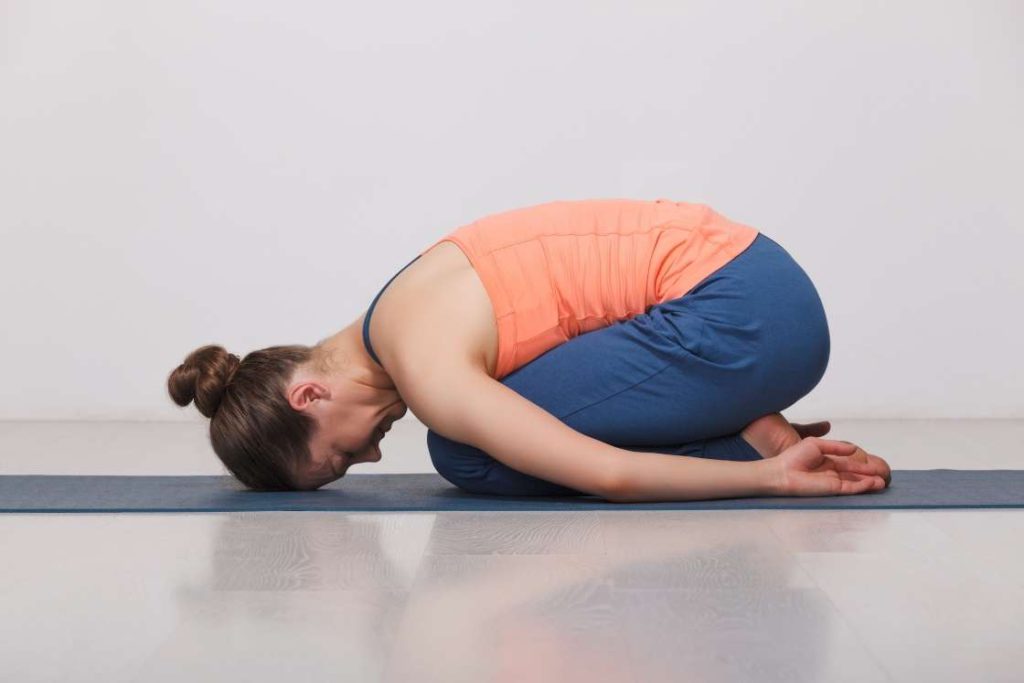
Child’s pose is a very relaxing pose for your muscles and nerves. In vertigo, it will help the internal healing of wear and tear in your middle and inner ear. This pose will also optimize the hormonal functions in your body that will address many of the non-vestibular causes. Moreover, this pose will also increase blood flow to your brain, enhancing your cognitive abilities.
- Kneel down on your knees.
- Keep your legs hip width apart.
- Fold your legs and bend back, to sit between your feet.
- Keep your upper body straight.
- Bend forward all the way to touch your knees with your chest.
- Rest your head on the ground.
- Stretch out with your hands over your head.
- Breathe deep into your lower back.
- Hold the pose for 20 seconds.
If sitting between your feet seems hard, place a yoga block between your feet and sit on it. You can also place a block under your head.
2. Seated forward bend
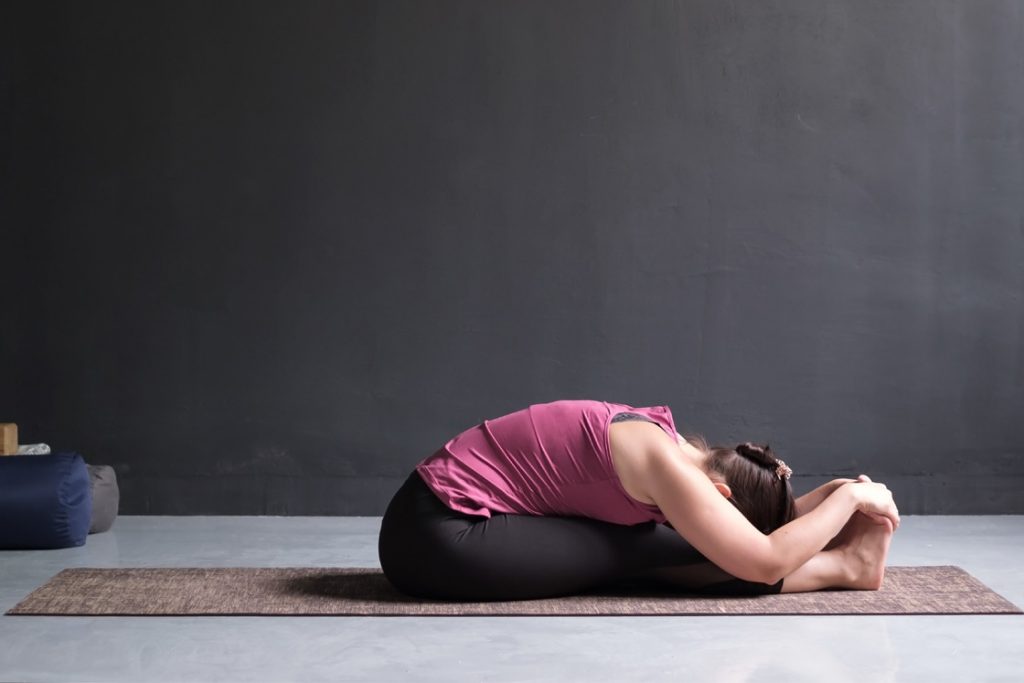
Seated forward bend, aka paschimottanasana is significantly beneficial to your peripheral nerves and blood circulation. It will balance vascular pressure in your eyes and near your ears. This optimized pressure will ease the neural pathways.
Other than this, this pose is also quite beneficial for your spine and thus, for the vertebral arteries; both of which play a quintessential role in your balance.
- Sit in a staff position.
- Keep your upper body straight.
- Bend forward, to touch your knees with your forehead.
- Bend your body once from your groin, and then again from your hip.
- Do not break your knees.
- Extend your hands straight overhead and reach for your toes.
- Hold the pose for 5 breaths
- And repeat the pose 5 times.
Don’t force your bend, if it leads you to bend your knees. Your hands, instead of reaching for your toes, can alternatively be by the sides of your knees. Use your hands to press against your knees, keeping them firmly in their place.
3. Plow pose
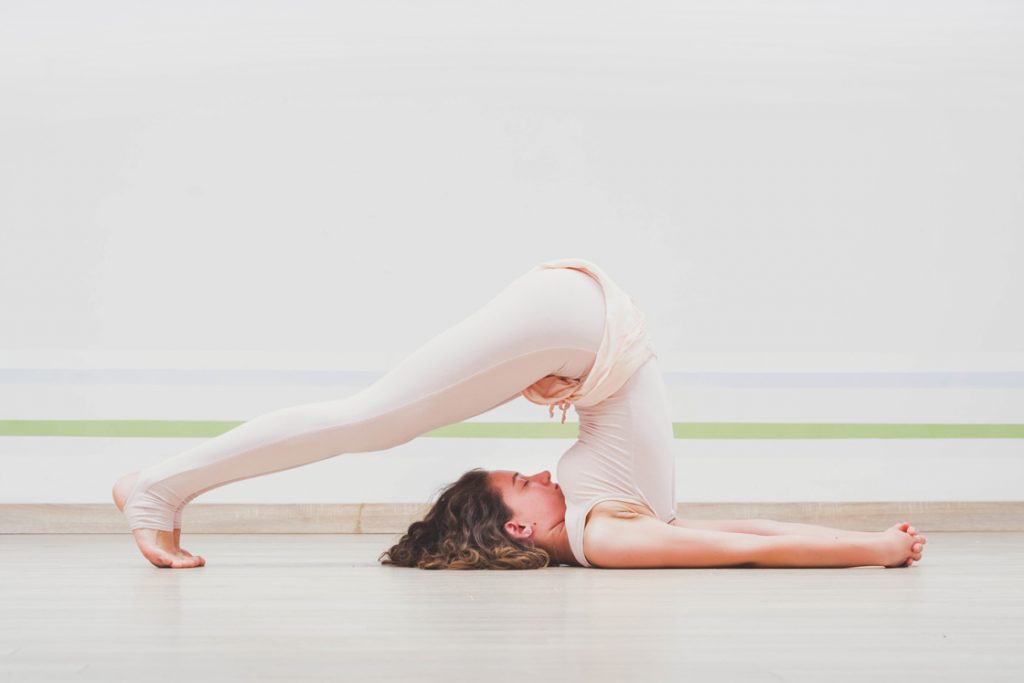
Plow pose will probably have the maximum benefit in eliminating your head spinning and neck-related sensation (cervical vertigo). This pose has a very diverse range of benefits for vertigo including stabilize your cardiovascular system, enhance your hormone activities, stimulate neural functions, trigger your metabolism and improve your respiration.
- Lie supine on the floor.
- Keep your legs joined.
- Fold your legs and draw them towards your chest.
- Lift your hips and back off the floor facing upward.
- Keep your shoulders fixed to the ground, and use them to balance the lift of your lower body.
- Extend your legs straight upward.
- Balance your entire inverted position upward.
- Essentially you will be getting into a shoulder stand first.
- Now gradually bend your legs from your groin, and bring them down over your head.
- As you bring down your legs, support your hips with your hands.
- Rock your torso back and forth, using the support of your hand, to find a position that eases your leg movement.
- Once you have pulled down your leg to your maximum position, push back your torso to its original position.
- Ideally your toes need to touch the ground over your head.
- Hold the pose for 5-7 breaths and release
As you bring down your legs both your thighs and knees will tend to extend outwards. You can strap them together with a belt while lying supine.
4. Corpse pose
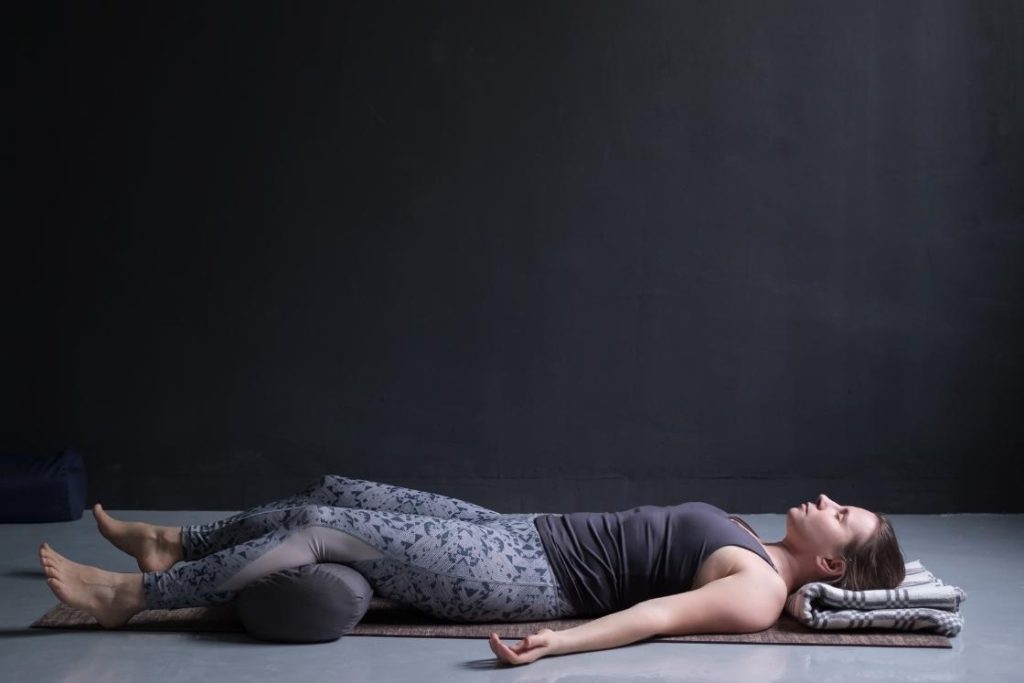
The corpse pose is the ultimate relaxing pose. This pose can be very effective in relieving most of your vertigo symptoms like nausea, vomiting, headache, and tinnitus. When correctly performed with full mindfulness the corpse pose is said to relax each and every muscle tissue in your body. The advanced relaxed state of mind and body will trigger prompt cell regeneration.
- Lie supine
- Keep your legs at a gap of a foot
- Stretch out your arms
- Take deep breaths and focus on each muscle group
- As you focus on each muscle group, your brain will be aware of that area and nerves will be stimulated to relax the muscles.
- Your deep breathing will also increase the oxygen intake in the blood reaching the muscles.
- Consequently your muscles will be relaxed and receive proper nutrition; the result of which is healing.
- You can stay in this pose for a comfortable 10 minutes.
Body awareness is easier said than done in shavasana. Initial sessions will be riddled with distracting thoughts. You will have to ride this wave of distraction, till you eventually develop the habit of calming your mind into awareness.
5. Ujjayi Pranayama
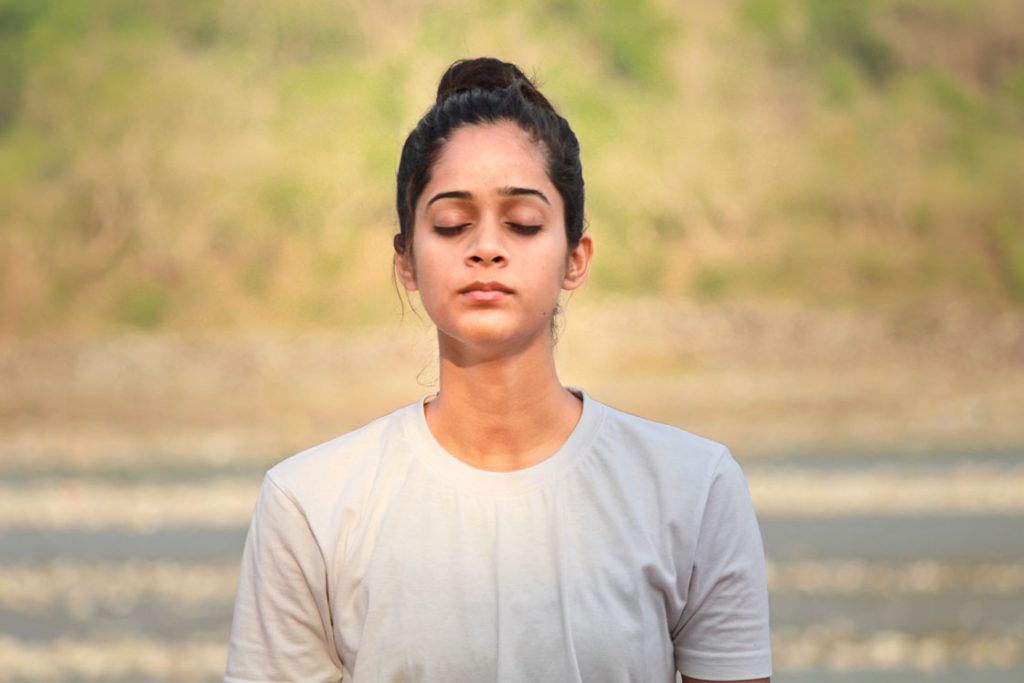
When speaking of vertigo, we cannot simply avoid the benefits of Pranayama. Vertigo can have respiratory-related causes, and no other yogic exercise can boost the physiology of your respiratory systems like the Pranayama.
Ujjayi Pranayama benefits your facial nerves and blood vessels, your throat muscles, ocular nerves and muscles, respiratory tract, respiratory muscles, and respiratory nerves.
- Sit in a comfortable cross-legged position
- Keep your hands on your knees
- Take a deep breath in by slightly constricting your throat muscles.
- While inhaling, allow air to pass through constricted throat creating an ocean wave like sound.
- Hold the breath for 20 seconds.
- Slowly exhale out retained air again allowing it to pass through the constricted throat.
- Repeat this exercise for 10 times.
The hold of 20 seconds is not obligatory. You need to understand the capacity of your respiratory systems, and adjust it accordingly. It is wise not to force the hold with a weak respiratory system.
6. Bhramari Pranayama
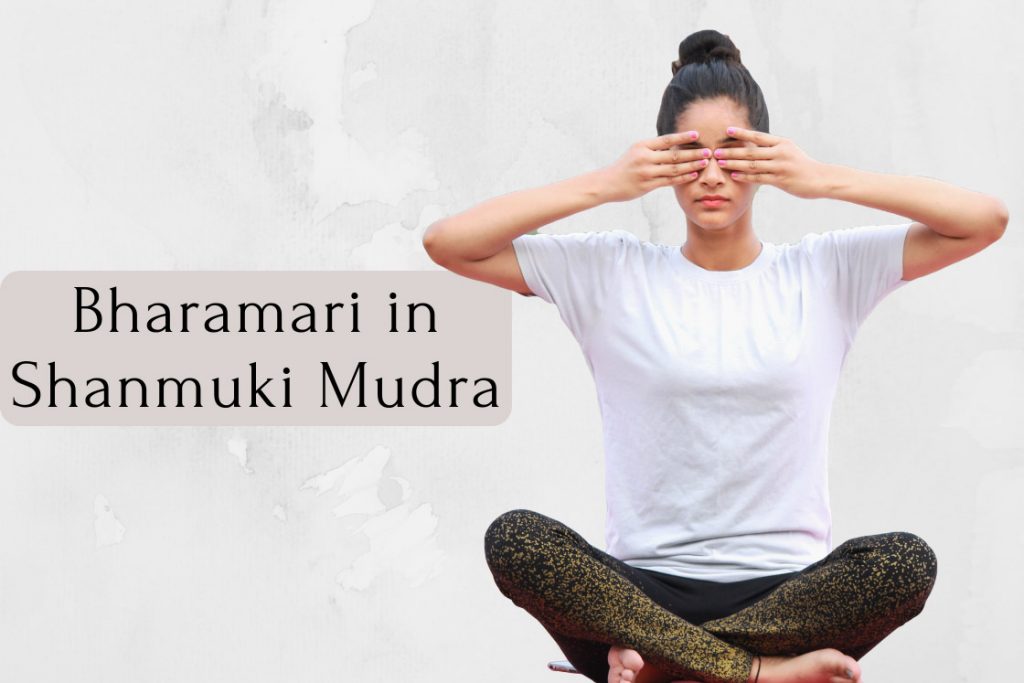
The majority of the causes for vertigo are in some way or the other related to the disruption of the physiology of your ears and eyes. To avoid such vertigo causes, Bhramari Pranayama or bee breathing deals with the physiological apparatuses that form your sensory system. In short Bhramari Pranayama deals with almost all issues related to your face/head region.
- Sit in a comfortable cross-legged pose
- Withdraw all your senses with a Shanmukhi Mudra.
- In a Shanmukhi Mudra you close all your senses inward, with the fingers on both your hands.
- Place your little fingers under your lower lip, your ring fingers over your upper lip, your middle fingers over your nose bridge, your index fingers over your eyes and your thumbs to close your ear holes.
- Now breathe in and exhale making a humming bee-like vibration sound.
- The vibration should be created at the back of the mouth.
- Try to keep the vibration contained, and distribute it across all your senses equally.
- Repeat the exercise 10 times.
The purpose of closing your senses inward is to reflect inside you with the senses that are generally busy perceiving the outer world. Reflect inward towards the vibrations with all your senses.
Conclusion
Keep in mind that vertigo is a multi-layered symptom. If your vertigo persists for several weeks, and increases in intensity, do not attempt to self-diagnose. Please visit someone with the authority to diagnose and treat medical conditions. Vertigo is mostly not a cause of alarm, but when persists and intensifies, it could indicate an underlying condition. Conditions like hearing loss, chronic liver disorder, and neurological degeneration, that will require immediate medical attention.
Yoga poses for vertigo will address different mechanisms in your body, including your blood flow, hormonal activities, muscle health, heart health, nervous stimulus, stress levels, and such. Benefits to these mechanisms will lead to treating the vestibular and non-vestibular causes of vertigo.
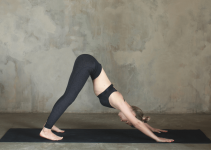

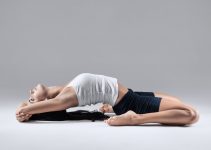


Thank you